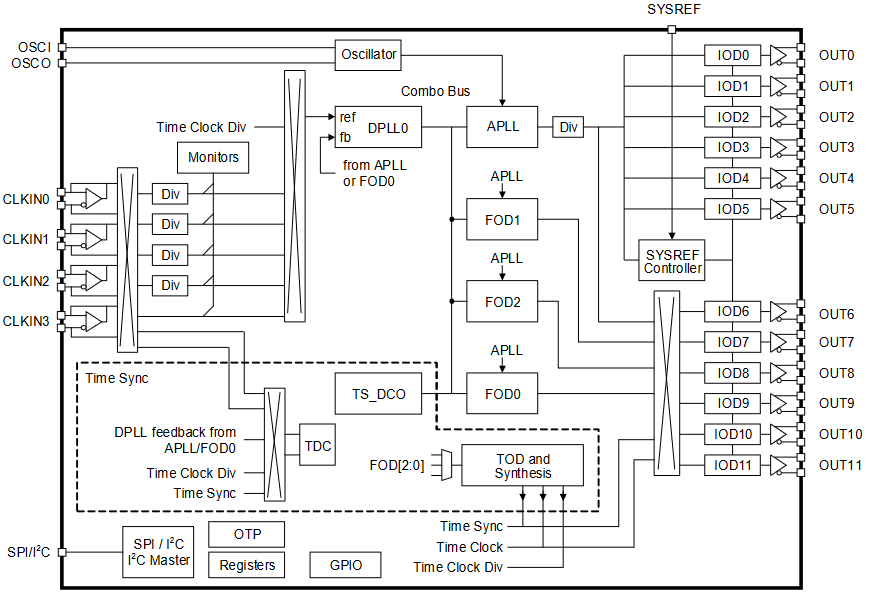Package Information
| Pkg. Type | CABGA |
| Pkg. Dimensions (mm) | 9.0 x 9.0 x 1.1 |
| Pkg. Code | BJG100 |
| Pitch (mm) | 0.8 |
| Lead Count (#) | 100 |
Environmental & Export Classifications
| ECCN (US) | EAR99 |
| HTS (US) | 8542.39.0090 |
| Moisture Sensitivity Level (MSL) | 3 |
| Pb (Lead) Free | Yes |
Product Attributes
| Wireless | 1 |
| Output Type | HCSL, LVCMOS, LVDS |
| Inputs (#) | 8 |
| Input Type | CML, Crystal, HCSL, LVCMOS, LVDS, LVPECL |
| Output Banks (#) | 12 |
| Pkg. Dimensions (mm) | 9.0 x 9.0 x 1.1 |
| Pkg. Type | CABGA |
| Carrier Type | Tray |
| Price (USD) | 22.13538 |
| Core Voltage (V) | 1.8, 3.3 |
| Input Freq (MHz) | 0.0000005 - 1000 |
| Lead Count (#) | 100 |
| Length (mm) | 9.0 |
| MOQ | 260 |
| Moisture Sensitivity Level (MSL) | 3 |
| Output Freq Range (MHz) | 0.0000005 - 1000 |
| Output Voltage (V) | 1.8 |
| Outputs (#) | 12 |
| Pb (Lead) Free | Yes |
| Pb Free Category | e8 SnAgCu |
| Phase Jitter Max RMS (ps) | 0.05 |
| Phase Jitter Typ RMS (ps) | 0.018 |
| Pitch (mm) | 0.8 |
| Published | No |
| Qty. per Carrier (#) | 260 |
| Qty. per Reel (#) | 0 |
| Tape & Reel | No |
| Temp. Range | -40 to 85°C |
| Thickness (mm) | 1.1 |
| Width (mm) | 9.0 |
Resources for RC38112
Description
The RC38112 is an ultra-low phase noise radio synchronizer, multi-frequency clock synthesizer, and digitally controlled oscillator (DCO). It delivers exceptional performance for 5G radio units (RU), distribution units (DU), and network switches and routers. Its capability to output clocks with ultra-low in-band phase noise and significantly reduced spurious levels enhances the reliability and efficiency of 4G and 5G RF transceivers. The device offers the most margin on reference clock jitter, with up to three synchronization domains and four frequency domains, allowing designers to simplify their overall PCB design and providing a single timing solution supporting both synchronization via CPRI or eCPRI and RF clock generation. It offers low power dissipation and a smaller area while still achieving ultra-low jitter, and maintains ultra-low phase coherence essential for 5G and 5G-A BTS radio unit designs. The RC38112 provides flexibility by allowing locking to external reference clocks or free-running crystals/oscillators and features hitless reference switching to ensure uninterrupted service even when switching between redundant timing sources, making it an ideal choice for ensuring robust, precise timing across telecommunication applications.
